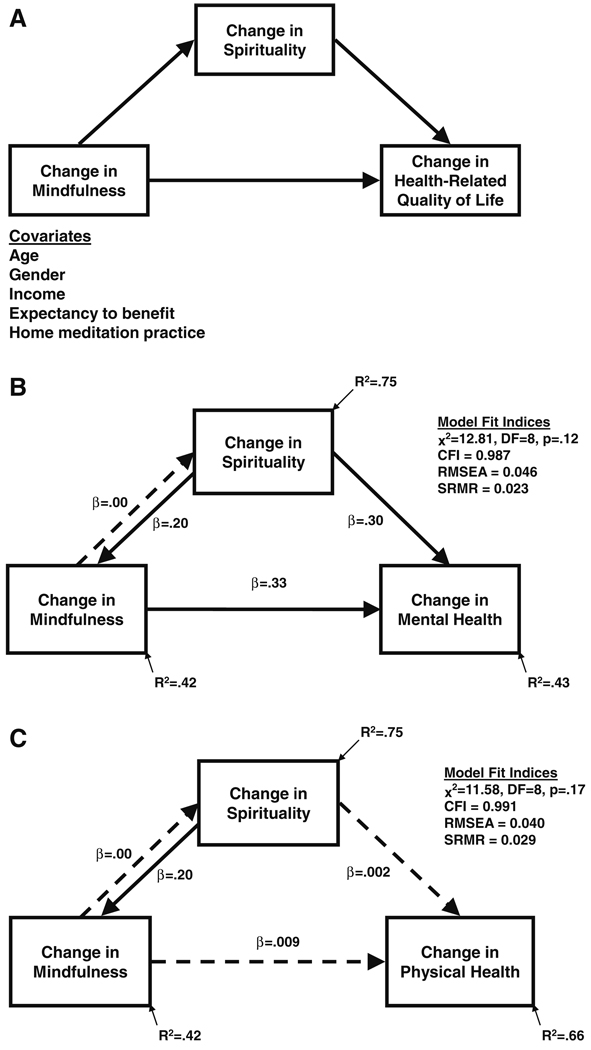Fig. 1.
a Hypothetical model where change in spirituality is a partial mediator of the relationship between change in mindfulness and change in health-related quality of life following Mindfulness-Based Stress Reduction. Covariates included in all modeling analyses are shown. b Standardized solution is presented for the final path model linking residualized changes in spirituality, mindfulness, and mental health. The pattern of associations did not support the original conceptual model. The data suggested an alternative mediation model in which increased ratings of daily spiritual experiences were significantly associated with increased mental health in two ways: (1) directly, and (2) indirectly, as a function of greater mindfulness. c Changes in self-reported spirituality and mindfulness were not significantly associated with physical health, thereby precluding the possibility of mediation. Path coefficients are standardized regression (β) weights. Statistical tests were conducted for direct and indirect (mediational) pathways linking predictor and criterion variables. Solid arrows represent statistically significant associations (P < .05). Dashed arrows represent non-significant (ns) relationships (P > .05). R2 is the total percentage of variance explained, including the effects of baseline status, expectancy, home meditation practice, and demographic variables (age, gender, and income) that are not shown for simplicity. The final models shown in b and c provided good fit with one modification of the original hypothesized model; a significant direct path was added from spirituality to mindfulness, thus allowing bidirectionality. The non-significant direct path from change in mindfulness to change in spirituality was fixed to zero without a significant loss of fit

